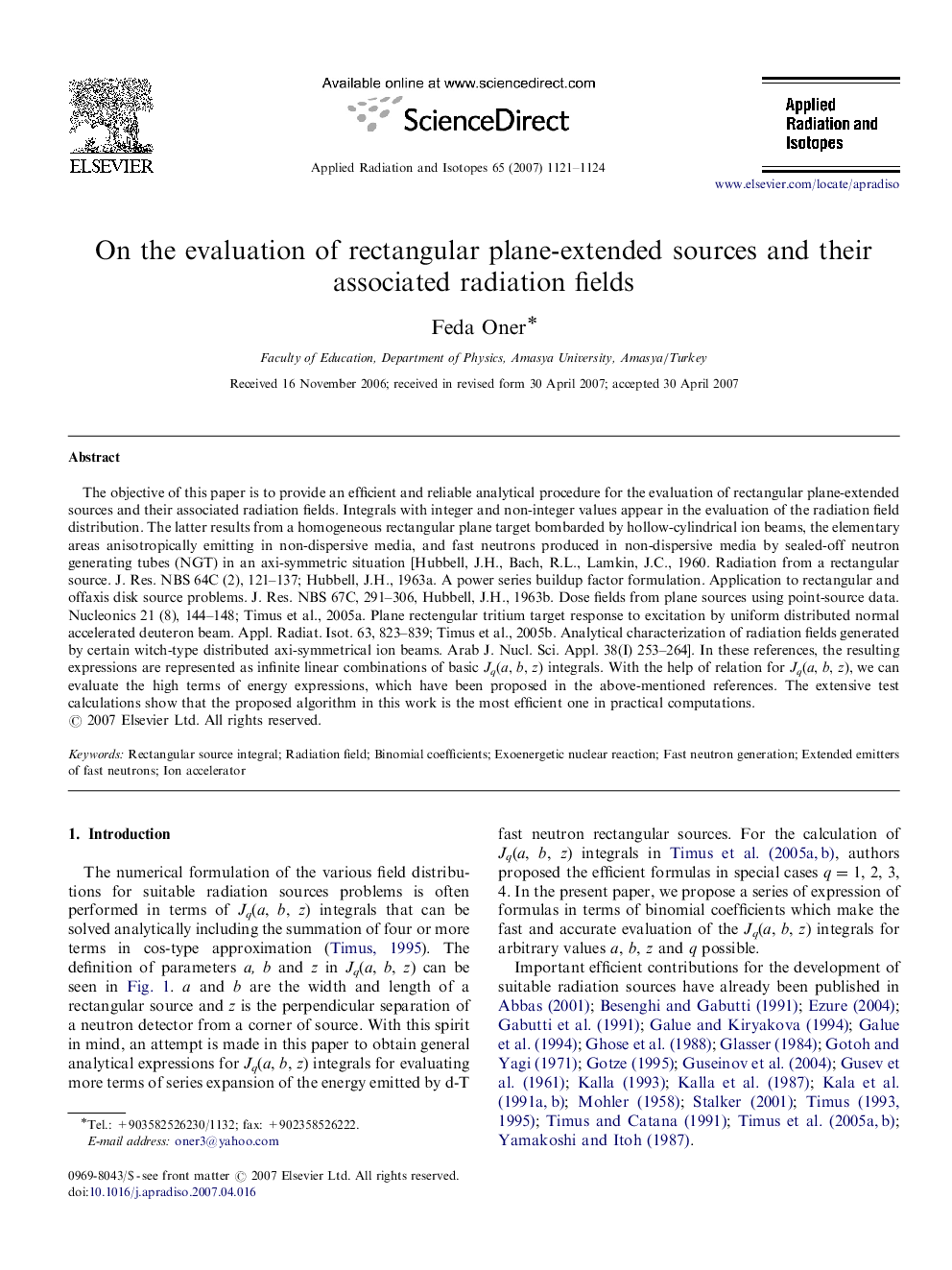| Article ID | Journal | Published Year | Pages | File Type |
|---|---|---|---|---|
| 1877270 | Applied Radiation and Isotopes | 2007 | 4 Pages |
The objective of this paper is to provide an efficient and reliable analytical procedure for the evaluation of rectangular plane-extended sources and their associated radiation fields. Integrals with integer and non-integer values appear in the evaluation of the radiation field distribution. The latter results from a homogeneous rectangular plane target bombarded by hollow-cylindrical ion beams, the elementary areas anisotropically emitting in non-dispersive media, and fast neutrons produced in non-dispersive media by sealed-off neutron generating tubes (NGT) in an axi-symmetric situation [Hubbell, J.H., Bach, R.L., Lamkin, J.C., 1960. Radiation from a rectangular source. J. Res. NBS 64C (2), 121–137; Hubbell, J.H., 1963a. A power series buildup factor formulation. Application to rectangular and offaxis disk source problems. J. Res. NBS 67C, 291–306, Hubbell, J.H., 1963b. Dose fields from plane sources using point-source data. Nucleonics 21 (8), 144–148; Timus et al., 2005a. Plane rectengular tritium target response to excitation by uniform distributed normal accelerated deuteron beam. Appl. Radiat. Isot. 63, 823–839; Timus et al., 2005b. Analytical characterization of radiation fields generated by certain witch-type distributed axi-symmetrical ion beams. Arab J. Nucl. Sci. Appl. 38(I) 253–264]. In these references, the resulting expressions are represented as infinite linear combinations of basic Jq(a, b, z) integrals. With the help of relation for Jq(a, b, z), we can evaluate the high terms of energy expressions, which have been proposed in the above-mentioned references. The extensive test calculations show that the proposed algorithm in this work is the most efficient one in practical computations.
